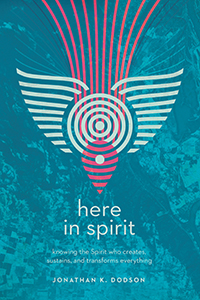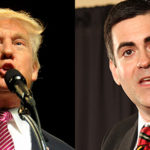VATICAN CITY (RNS)—In Catholic theology, the closed-door conclave to elect a new pope is supposed to be guided by the Holy Spirit.
There’s no horse-trading or lobbying, no insider deal-making or outside influences allowed. Just red-robed cardinals solemnly entering the Sistine Chapel, accompanied only by prayers and their consciences, sitting beneath Michelangelo’s fresco of the Last Judgment and discerning God’s will on who should be the next successor to Saint Peter.
 Pope Benedict XVI resigned last month. The College of Cardinals convened March 12 to elect a new pope.At least that’s the theory. The last millennium has shown papal elections can be fraught with politics or worse, and can take months or even years of wrangling to reach a resolution.
Pope Benedict XVI resigned last month. The College of Cardinals convened March 12 to elect a new pope.At least that’s the theory. The last millennium has shown papal elections can be fraught with politics or worse, and can take months or even years of wrangling to reach a resolution.
In the past century, however, as both security and secrecy improved, papal elections have swung sharply in the direction of brevity. Since 1903, conclaves have averaged a mere three days in duration, and some—including the last one, in 2005—lasted a mere 24 hours.
What accounts for this historic shift? While the Holy Spirit may be getting more efficient, behavioral scientists and church experts argue a new group dynamic is playing a growing role as well, and the “bandwagon effect” is proving as powerful as any sacred—or profane—electioneering did before.
Go with the winner?
That’s the upshot of a 2006 study by an Australian researcher who analyzed the voting patterns from seven conclaves in the 20th century, reconstructed from leaks that emerged afterward. The study found cardinals who changed their minds did so chiefly because they saw the votes tipping toward a single candidate and went with the expected winner.
These “strategic” voters—as opposed to “sincere” voters who backed the same person through each ballot—thus pushed the conclave to a speedier-than-expected resolution, said J.T. Toman, an expert in econometrics at the University of Sydney and author of the paper, “The Papal Conclave: How do Cardinals Divine the Will of God?”
“There are two sources of information in the conclave cardinals could use to estimate the probability of election success for a cardinal—the observed vote counts and the verbal communications that occur at lunch and in the evenings,” Toman wrote.
Sign up for our weekly edition and get all our headlines in your inbox on Thursdays
At the end of the day, she said, the subtle arm-twisting over coffee or cocktails didn’t matter so much. Instead, “the observed vote tallies” proved to be “the dominant force” in rallying the cardinals around a single candidate.
Bandwagon dynamic
Although Toman did not include the conclave of April 2005 in her study, a version of the bandwagon dynamic seemed to hold true there, as well. Over the course of four ballots, Cardinal Joseph Ratzinger moved from just under 50 votes in the first round to 65 in the second and then 84 by the final tally, surpassing the necessary two-thirds threshold needed to become Pope Benedict XVI. He easily outpaced a lone rival, reportedly Argentine Cardinal Jorge Mario Bergoglio, who also will take part in this month’s conclave.
But other factors peculiar to the College of Cardinals also may be spurring the rush to judgment.
One is the expansion of the College of Cardinals, which has doubled in size in recent decades. “The larger the group, the greater the likelihood of a bandwagon effect occurring,” John-Peter Pham, a former Vatican diplomat, writes in his book Heirs of the Fisherman: Behind the Scenes of Papal Death and Succession.
In addition, Pham says, the College of Cardinals is far more diverse now—there are electors from about 50 countries—and because they don’t know each other that well, many cardinals are likely to go with what they perceive to be the wisdom of the crowd, as represented by the vote tallies.
Inspiration rather than aspiration
Another element in the mix: the strong desire to make the conclave’s outcome appear to be the result of inspiration more than aspiration. A quick conclave demonstrates unity of mind and purpose, whereas a drawn-out conclave could signal dissension that might undermine a future pope’s standing—especially if the choice were controversial, as Benedict’s was expected to be.
“If it was to be Ratzinger, it must be quick and clear-cut. Otherwise the reception would be disastrous,” Canadian Cardinal Marc Ouellet has said in explaining the thinking of Benedict’s supporters in the 2005 conclave.
The cardinals who have prepared for the latest papal election seem just as motivated to make a decision quickly and cleanly, which is why there appeared to be a push to extend the pre-conclave discussions, called the General Congregations, so the cardinals can find a consensus ahead of the actual voting.
“Someone quoted St. Thomas of Aquinas, who said you should be slow in deliberation and quick in decision-making,” Chicago Cardinal Francis George said. “So, decision-making is the conclave, and deliberation is the General Congregations.”
Guided by the Holy Spirit
Does that mean a conclave isn’t guided by the Holy Spirit—that it’s not much different from the election of a class president, where the cool kids have the upper hand going in and everyone else just goes along with the inevitable? Not necessarily.
For one thing, the recent history of conclave balloting also shows if the momentum for the early favorite breaks, then all bets are off as the electors step back to reassess and find another candidate—albeit one who likely will gain consensus quickly and win fast.
Moreover, in this conclave, there appears to be no clear favorite to rally around quickly, and the cardinals also seem determined to have as open a race as possible.
So, group dynamics surely will play a part. But the Holy Spirit blows where the Spirit will, and who will emerge as pope still is anybody’s guess.














We seek to connect God’s story and God’s people around the world. To learn more about God’s story, click here.
Send comments and feedback to Eric Black, our editor. For comments to be published, please specify “letter to the editor.” Maximum length for publication is 300 words.